That sort of behavior is not possible with a WrapPanel without setting explicitly its Height/MinHeight for a Vertical orientation or Width/MinWidth for a Horizontal orientation. The ScrollViewer will only show the scrollbars when the FrameworkElement this scroll viewer wraps doesn't fit into the viewport.
You can create your own wrap panel that calculates its minimum size based on its children.
Alternatively, you can implement a Behavior<WrapPanel> or an attached property. This won't be as easy as just adding a couple of XAML tags, as you might expect.
We have solved this issue with an attached property. Let me give you an idea of what we did.
static class ScrollableWrapPanel
{
public static readonly DependencyProperty IsEnabledProperty =
DependencyProperty.RegisterAttached("IsEnabled", typeof(bool), typeof(ScrollableWrapPanel), new PropertyMetadata(false, IsEnabledChanged));
// DP Get/Set static methods omitted
static void IsEnabledChanged(DependencyObject d, DependencyPropertyChangedEventArgs e)
{
var panel = (WrapPanel)d;
if (!panel.IsInitialized)
{
panel.Initialized += PanelInitialized;
}
// Add here the IsEnabled == false logic, if you wish
}
static void PanelInitialized(object sender, EventArgs e)
{
var panel = (WrapPanel)sender;
// Monitor the Orientation property.
// There is no OrientationChanged event, so we use the DP tools.
DependencyPropertyDescriptor.FromProperty(
WrapPanel.OrientationProperty,
typeof(WrapPanel))
.AddValueChanged(panel, OrientationChanged);
panel.Unloaded += PanelUnloaded;
// Sets up our custom behavior for the first time
OrientationChanged(panel, EventArgs.Empty);
}
static void OrientationChanged(object sender, EventArgs e)
{
var panel = (WrapPanel)sender;
if (panel.Orientation == Orientation.Vertical)
{
// We might have set it for the Horizontal orientation
BindingOperations.ClearBinding(panel, WrapPanel.MinWidthProperty);
// This multi-binding monitors the heights of the children
// and returns the maximum height.
var converter = new MaxValueConverter();
var minHeightBiding = new MultiBinding { Converter = converter };
foreach (var child in panel.Children.OfType<FrameworkElement>())
{
minHeightBiding.Bindings.Add(new Binding("ActualHeight") { Mode = BindingMode.OneWay, Source = child });
}
BindingOperations.SetBinding(panel, WrapPanel.MinHeightProperty, minHeightBiding);
// We might have set it for the Horizontal orientation
BindingOperations.ClearBinding(panel, WrapPanel.WidthProperty);
// We have to define the wrap panel's height for the vertical orientation
var binding = new Binding("ViewportHeight")
{
RelativeSource = new RelativeSource { Mode = RelativeSourceMode.FindAncestor, AncestorType = typeof(ScrollViewer)}
};
BindingOperations.SetBinding(panel, WrapPanel.HeightProperty, binding);
}
else
{
// The "transposed" case for the horizontal wrap panel
}
}
static void PanelUnloaded(object sender, RoutedEventArgs e)
{
var panel = (WrapPanel)sender;
panel.Unloaded -= PanelUnloaded;
// This is really important to prevent the memory leaks.
DependencyPropertyDescriptor.FromProperty(WrapPanel.OrientationProperty, typeof(WrapPanel))
.RemoveValueChanged(panel, OrientationChanged);
}
private class MaxValueConverter : IMultiValueConverter
{
public object Convert(object[] values, Type targetType, object parameter, CultureInfo culture)
{
return values.Cast<double>().Max();
}
// ConvertBack omitted
}
}
It is maybe not the easiest way, and there are a little bit more lines that just a few XAML tags, but it works flawlessly.
You have to be careful with the error handling though. I've just omitted all the checks and exception handling in the sample code.
The usage is simple:
<ScrollViewer HorizontalScrollBarVisibility="Auto" VerticalScrollBarVisibility="Auto">
<WrapPanel Orientation="Vertical" local:ScrollableWrapPanel.IsEnabled="True">
<!-- Content -->
</WrapPanel>
</ScrollViewer



